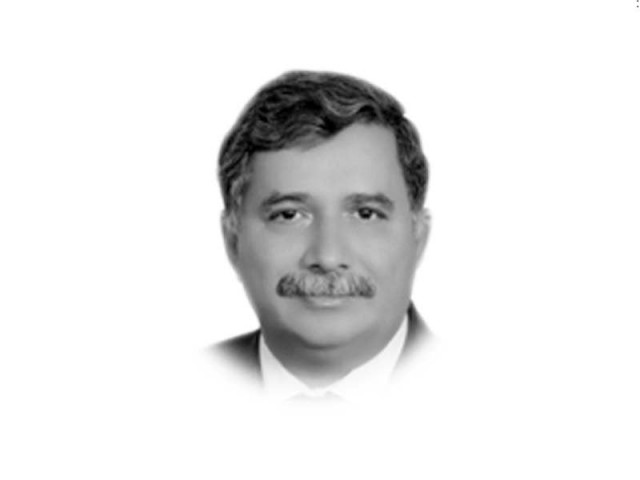Need to bridge the gap
The gap between institutions of the government and the public, in particular the burgeoning youth, has to be bridged

The people, majority of them youth, in Khyber-Pakhtunkhwa, in particular Swat, Dir, Buner, North Waziristan, South Waziristan, Khyber and Mohmand districts, are up with one voice against the monster of terrorism.
Charged crowds, mostly youth, yell slogans like ‘yeh jo dehshat gardi hai’, ‘naa manzoor’ and ‘jo maara maari hai’, expressing their deep, seething anguish, insecurity and deprivation. The impulse to self-preservation is natural; therefore, their demand emanates from this innate desire.
The crux of the slogans is that youth are no longer willing to accept terrorism on its face. The general perception is that the militants get space due to the wrong policies of the state. Rather succinct speeches indicate that militant organisations flourished at times due to misguided policies to deter the biggest enemy across borders during the last 42 years of conflict.
As a matter of fact, the perpetual conflict adversely affected the life patterns of an estimated 50 million people spread across the region that lies between the Hindu Kush in north-eastern Afghanistan and the northern stretch of the Indus River in Pakistan. The most unfortunate aspect is that the cradle of Gandhara civilisation has been portrayed as the epicentre of terrorism, the most dangerous place, and ‘ungoverned spaces’.
The hotbed of war caused them and their families to run here and there. Around 2.5 million Pakhtuns living in Malakand had to leave their home and hearth as internally displaced persons and move to other places after the conclusion of Operation Rah-e-Raast. Similarly, 4,456,976 families had to migrate to other, safer areas in the wake of Operation Zarb-e-Azb.
Despite being recipients of millions of dollars of aid annually, the living conditions of the people could not improve. Similarly, the human development indicators of the tribal Pakhtun belt are at their lowest as compared to the rest of Pakistan. Socioeconomic indicators show the literacy rate at just 58%, primary enrolment at 32%, population per doctor at 6728, and population per hospital bed at 2571. The proportion of births attended by skilled health personnel is 29.5%, which is far below the national average of 86%. The maternal mortality ratio for Fata stood at 395 per 100,000 persons, compared to 275 per 100,000 persons for K-P. The total fertility rate for Fata is 5, as opposed to 3.8 in Pakistan. The share of fully immunised children under 12 to 23 months is 33.9%, compared with Pakistan’s 76%. The industries affected were 515, out of which 158 were closed and 27 became dysfunctional. The unemployment rates (15-64 years) in Fata are higher than the rest of Pakistan (7.1% among adults in Fata to 5.6% for the national average); unemployment among Fata youth is particularly high at 11.8 percent (national average: 10.3%). Those factors have left deep scars of bitterness and must be understood.
The outburst of those grievances is quite explosive and must not be taken lightly. During these years, a new generation of young people has emerged to lead the movement, having endured the rigours of war through no fault of their own.
Energetic and imbued with contemporary philosophies focusing on people’s participation in decision-making, they now understand the dynamics of religious militancy and armed non-state actors in their midst. Having seen the negative impact of militancy on their socio-economic order, they fully understand that fundamental rights can only be enjoyed in a peaceful environment.
They are also cognizant of what ‘armed conflict’ means. For them, it means checkpoints, bunkers, patrolling, night raids, encounters, curtailment of movement, and above all, a war zone depicting siege.
They have witnessed their elders caught between the state apparatus and armed militants, caught between the devil and the deep blue sea, a situation that has harmed their sense of pride.
Such an atmosphere is suffocating for those yearning for liberty in their thoughts and actions. They want to live in an independent environment free from violence. What they want is peace and security, equality of opportunity, and social development. Given the opportunities, they have the capacity to surpass all others and bring laurels to the country. They have already proved their mettle in many areas. Today, one of the biggest electronic industries, Heirs, is owned by Afridis, and the same group is promoting sports by sponsoring Peshawar Zalmi. The biggest logistical enterprise is also with the other group, the Afridis. They have produced the best international cricket players, projecting the country’s soft image.
The crux of all this discussion is that the policymakers have to understand the psyche of the youth by adopting a conciliatory approach. This can be done through a participatory approach through the provision of social development and the harnessing of human resources, erasing the impression that they are being colonised. The gap between institutions of the government and the public, in particular the burgeoning youth, has to be bridged. Still, there is time before it is too late.
Published in The Express Tribune, November 23rd, 2022.
Like Opinion & Editorial on Facebook, follow @ETOpEd on Twitter to receive all updates on all our daily pieces.















COMMENTS
Comments are moderated and generally will be posted if they are on-topic and not abusive.
For more information, please see our Comments FAQ